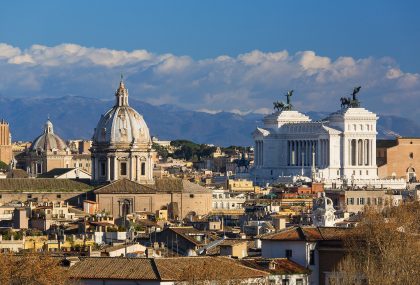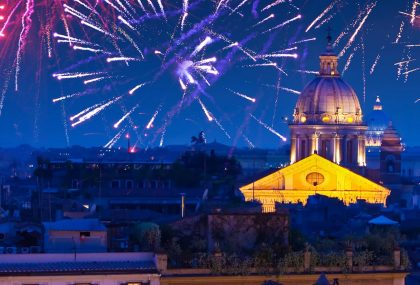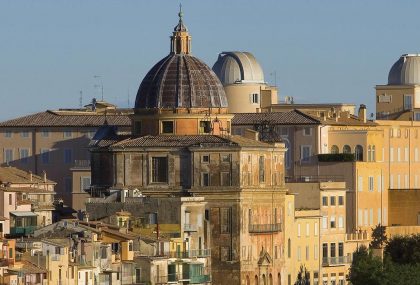Rome’s secret art treasures
Catherine McCormack is an art historian, lecturer and author of the Hedonist’s Guide to Rome. Here are her favourite hidden gems
I was first smitten by Rome at a critical age. A few days before my 22nd birthday I arrived in the Eternal City, with nowhere to live, clutching the address of the out-of-town school I had been stationed at as a foreign language assistant. Ten years later, Rome has come to seem like a love affair that I can’t resist returning to. I’ve always found excuses to come back as a travel writer and art history lecturer; I suspect I even chose a career that would lead me back to caput mundi, and over the years I’ve discovered its hidden art treasures.
Sant’Agostino, on a quiet street behind the Pantheon (Piazza di Sant’Agostino, closed daily between 12.30 and 4pm) is home to my favourite Caravaggio altarpiece in the city. The wonderfully buxom Madonna of the Pilgrims, poised on balletic foot in front of the dirty, dusty pilgrims on her doorstep, steps into the cool shadows of the church, like a sculpture come to life.
Every visitor flocks to Trastevere in search of the real Rome, but few venture to the district east of Viale Trastevere, the quieter, calmer side. I love to drop in to the beautiful church of Santa Cecilia in Trastevere (22 Piazza di Santa Cecilia) to see Stefano Maderno’s chilling, beautiful sculpture of the virgin martyr, which depicts her incorrupt body, exhumed 700 years after her execution.
Then there is the archaeological sandwich that is Basilica San Clemente. A 12th-century basilica with glittering mosaics welcomes you at street level and showcases a gorgeous frescoed chapel by Masaccio with the life cycle of my name saint, Catherine. But the real treat is down the steps to the right of the nave that lead to the excavated remains of a 4th century basilica, a Roman temple of Mithras, and a 1st century AD Roman house with running water, possibly the hiding place of early Christians.
South of the river, in the up and coming Ostiense district, the Centrale Montemartini engages with Rome’s antique past in a refreshing way. The industrial setting, a former power plant, now houses the overspill of classical sculpture from the Capitoline Museums. The lustrous coldness of the marble fragments strike an aesthetic chord with the burnished machinery they are set against. For more poetry, it’s within walking distance of the Protestant Cemetery, should you wish to pay respects to the romantic poets Shelley and Keats, who are buried there.
Photo by Getty Images



